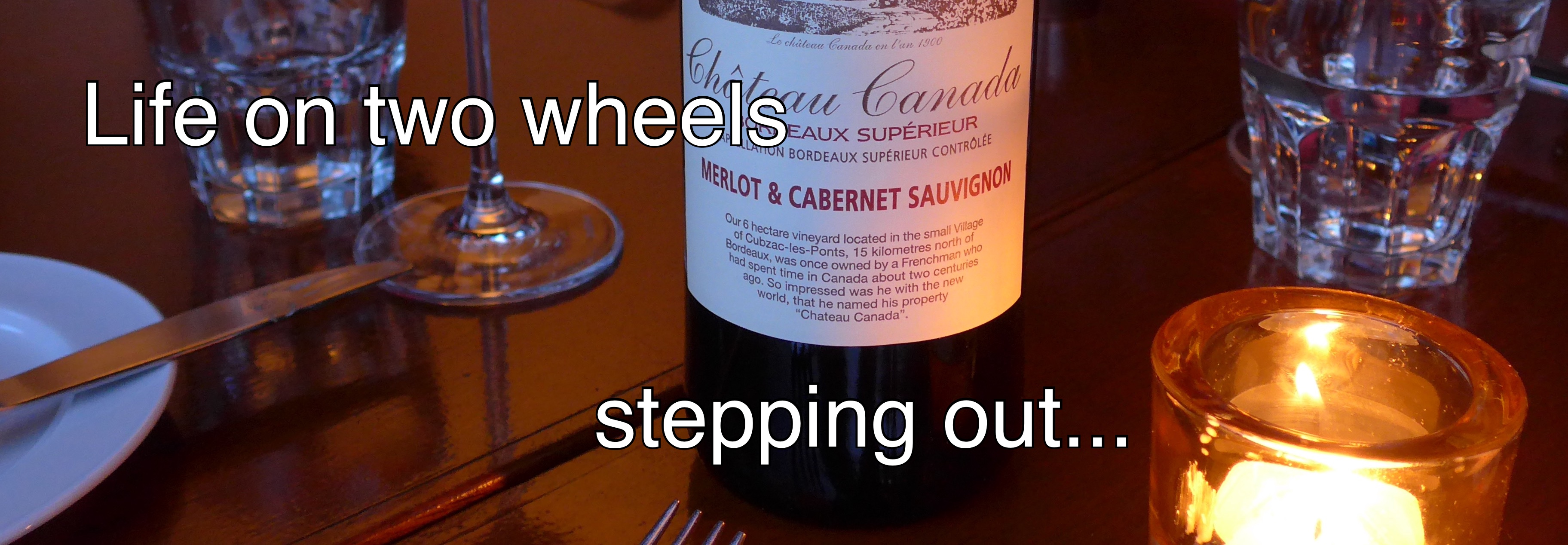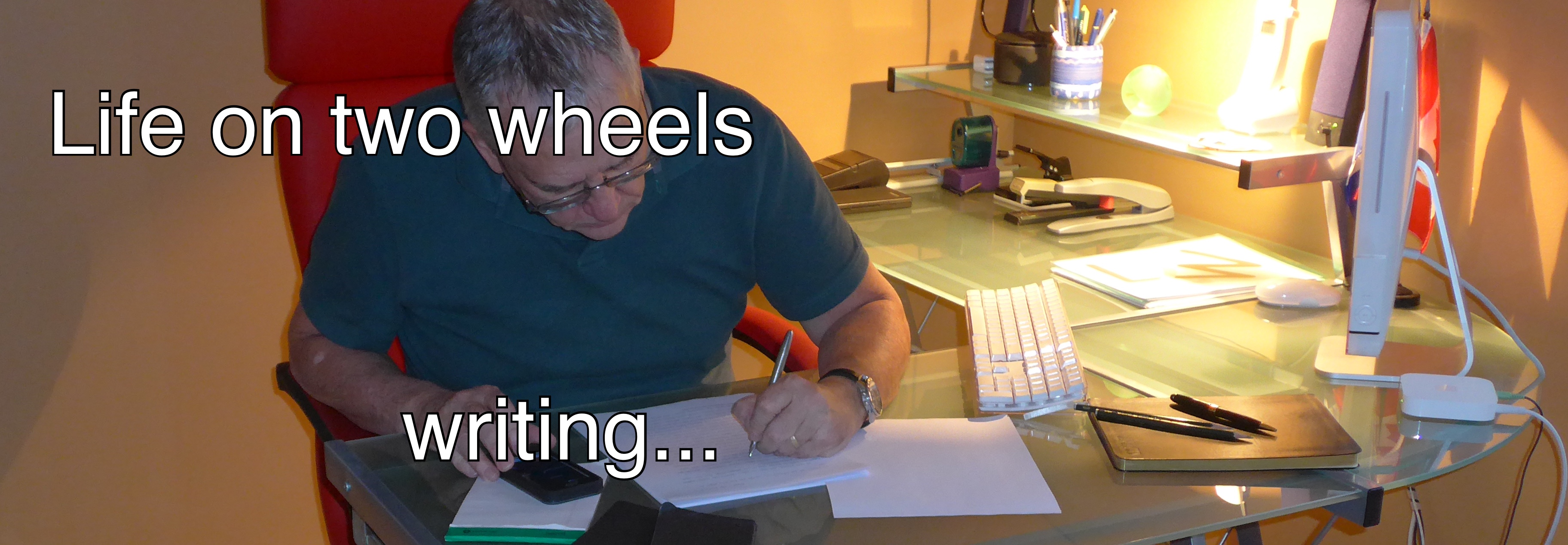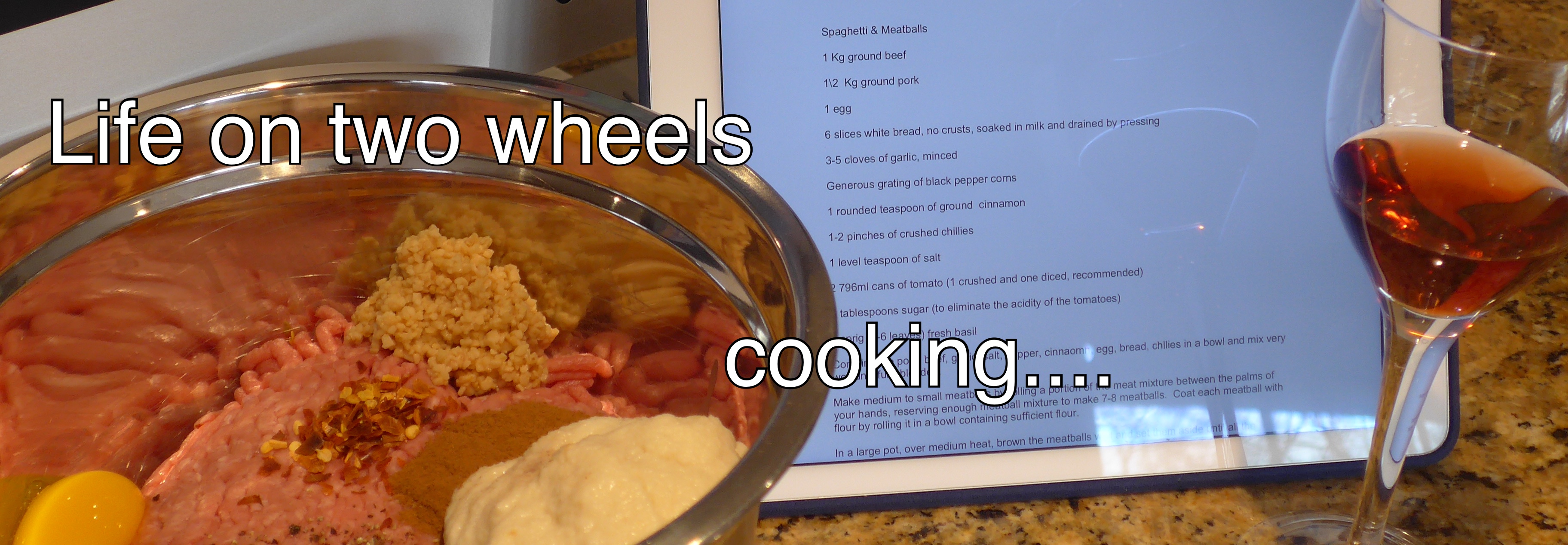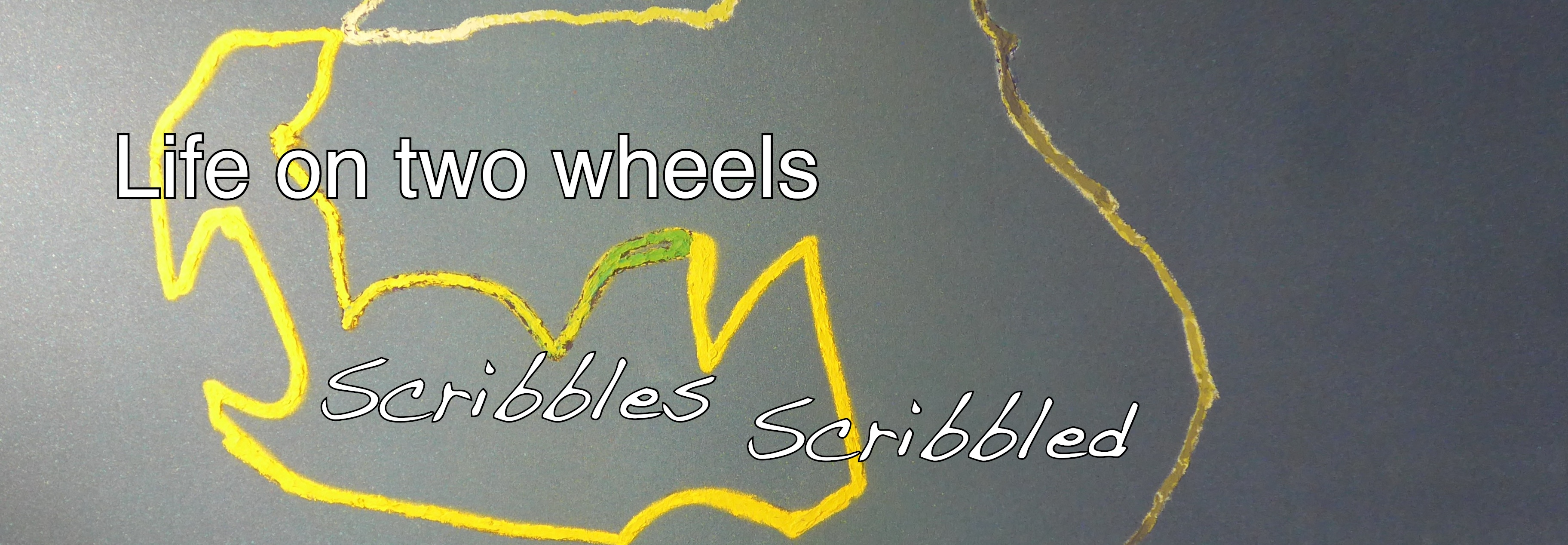To see this post on the site, go to https://life2wheels.com.
Making the cover is pretty straightforward.
Ok, well, that's not quite true. BUT, if you're here it's because a) you're up for a challenge, or b) you went to the trouble of printing, folding, sewing, and gluing a book, and now you really need a cover, or c) you just like imagining you could want to make a book cover.
One way or the other, you're here and you're following along, so I'll try not to disappoint.
First, you need a book that's actually ready for its cover. In particular the book's page edges must be trimmed to your liking, because once the cover's on, that trimming will become next to impossible. If you don't know what's involved, before going further down this rabbit hole, consider wandering over to these earlier posts, but to the very first one listed below, because that one is especially key to trimming:
- Bookbinding challenges - Ploughing and sewing
- Bookbinding challenges - End papers
- Bookbinding challenges - Folding
- Bookbinding challenges - Imposition
- Bookbinding challenges - Building a piercing cradle
I'll assume you're good to go!
Step one - measuring the book
As with every other aspect of bookbinding, precision is vital. Perfection is best, but relax, it's unachievable. Accept right now that there will be flaws, there always are. The key is to get the flaws to where you can embrace them amicably. If you can ever get them to where only you notice them, well that's basically what perfection is.
To measure anything in bookbinding you need a stainless steel ruler. Make sure that the ruler starts at its very edge. Here is what I mean:
It's almost impossible to get an accurate measurement with a ruler that doesn't start at the edge. You need a stainless steel ruler because most cutting and trimming happens with razor-sharp tools like Olfa cutters, skiving knives, and scalpels. Those will chew up the edge of rulers that are not made of stainless steel. Ideally the ruler won't have a cork backing. Cork backings can make the ruler more stable on a paper or cardboard surface, but it can also compromise accuracy.
All of which to say, now it's time to measure your book very carefully. I recommend getting used to measuring in metric (millimetres and centimetres), you'll thank me for that.
Step 2 - Choosing materials
You will need bookboard. It's not negotiable.
Bookboard is cardboard that has a single smooth layer, and often 3 mm thick works best.
If you aren't sure where to find it, Google it. You'll see that it's easy to purchase online.
Now we enter the scary part.
Step 3 - Precise cutting
It's really only scary if you can't bear getting it wrong.
You'll need that stainless steel ruler, and an Olfa cutter. That's what we also call a "box cutter", the one that has a razor-sharp blade that you can snap the edge off to get a fresh sharp edge. Make sure you have a bunch of spare blades, because you'll need them. Some needle-nose pliers are best for snapping those blades.
You are going to have to cut three pieces of bookboard: two identical pieces that will be the front and back covers, and one slimmer piece that will be the spine of the book.
Let's start with the front and back cover. When the cover is done, and aligned with the book, you'll probably want the covers to be 4 mm wider than the pages of the book along the top and bottom sides, and at the front side. Take a look at hardbound books you have. You should find roughly 4 mm overhangs on those 3 sides.
Here is how to get to the right cover dimensions.
Cut two rectangles of bookboard that are exactly the same width as the book, and that are the height of the book plus 8 mm. Once you've cut the front and back covers, sandwich the book between them and place the book spine-side-up on your work surface. You should see that you have a 4mm overlap at the top and bottom edges of the book, and a perfect fit from the spine to the front of the book. Measure the width of the spine plus only one thickness of bookboard. Now cut a piece of bookboard that is that width, and the exact height of the book plus 8 mm.
I know it's complicated as hell, but with a little luck you now have the three key ingredients for your book cover.
The final measurement step is to place the three pieces of cover on your work surface and leave a 9 mm gap on each side of the spine. Make sure that the front and back covers and spine are perfectly aligned along the top edge. Use a couple of strips of wash tape or masking tape to hold the pieces of the cover together in that way, with the 9 mm gaps (those are called "hinge gaps"). Carefully place the book into the cover. It will be quite loose. That's because no cover material has been applied. Check the overlaps: you should have roughly 4 mm overlaps on the top, side, and if you allow a 4 mm overlap on the front side, you will see that there is some play on the spine side.
Step 4 - gluing the bookboard to the cover material
Once you have selected your cover material such as a nice light and flexible leather, or bookcloth that is appropriate for the theme of the book, lay the cover material face down on the work surface, on top of a sheet of parchment or baking paper, and leave at least a 15 mm surplus of cover material on each of the outside edges, and glue each piece of the cover to the cover material making sure that the top edges are aligned and there is the 9 mm hinge gap between the spine and the front and back cover. Spread the glue everywhere on the surface of each piece of bookboard in a thin layer leaving no spots undone.
Once the cover bookboard is glued to the cover material, put the parchment paper to one side and trim the cover material along each side so that there is roughly a 15 mm overlap.
Now trim each of the four outside corners at a 45 degree angle leaving a slight gap between the corner of the bookboard and the diagonal trim. The slight gap is key to getting the cover material to wrap around and completely cover the corner.
Apply glue to the cover material and include the bookboard edges and fold the top edge onto the bookboard, using your bone folder to press the material flat and onto the edges of the bookboard, do the same for the bottom edge. Once that's done, do the same for the left and right side edges of the cover. As you make the final folds, make sure that the corners are nicely covered by the material.
The bad news is, that's a lot to process, and even more to do. The good news is that now you have a proper cover for your book.
Finally.
I know that it would be impossible for a novice to follow my advice and achieve a good cover. Fear not. Before attempting this task, watch this video.
It will all become crystal clear.













No comments:
Post a Comment